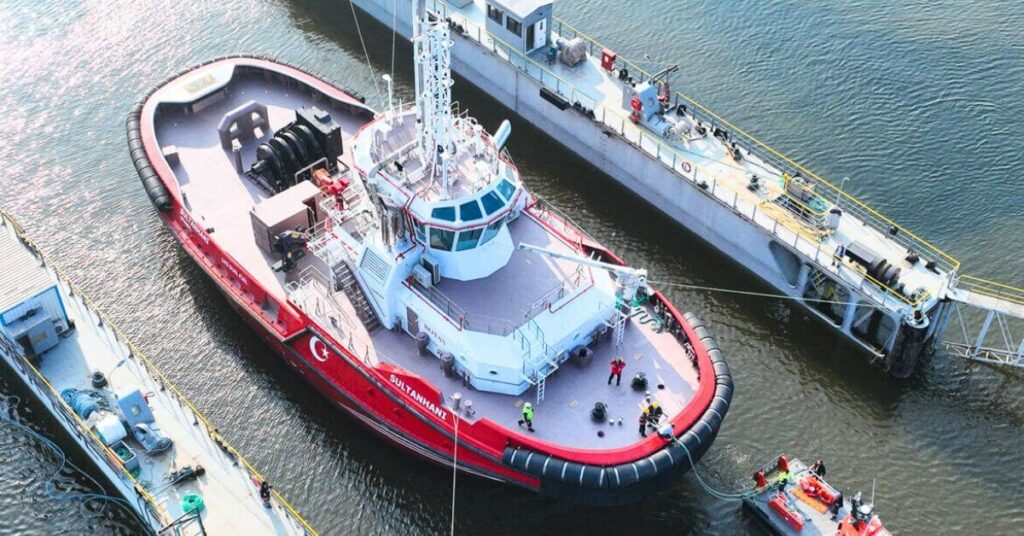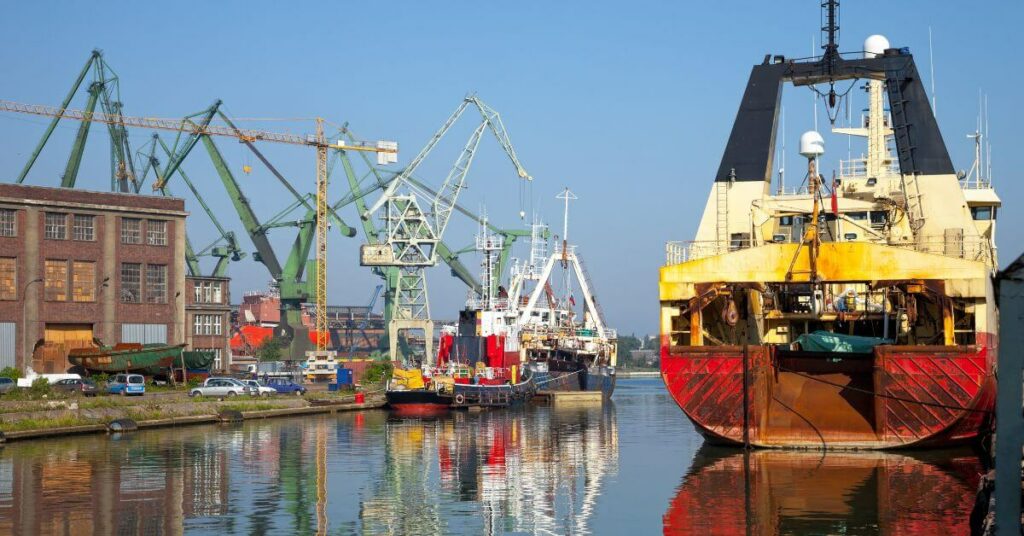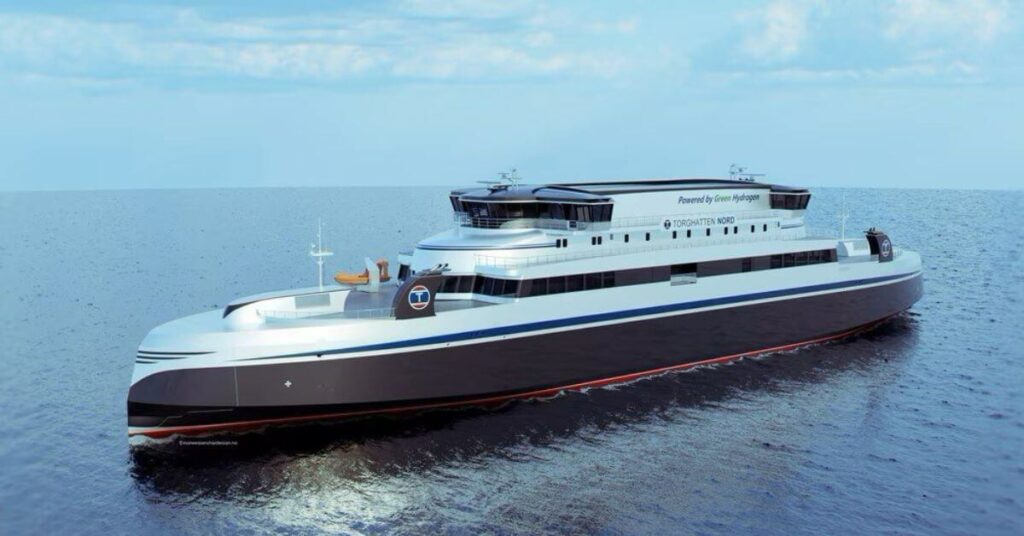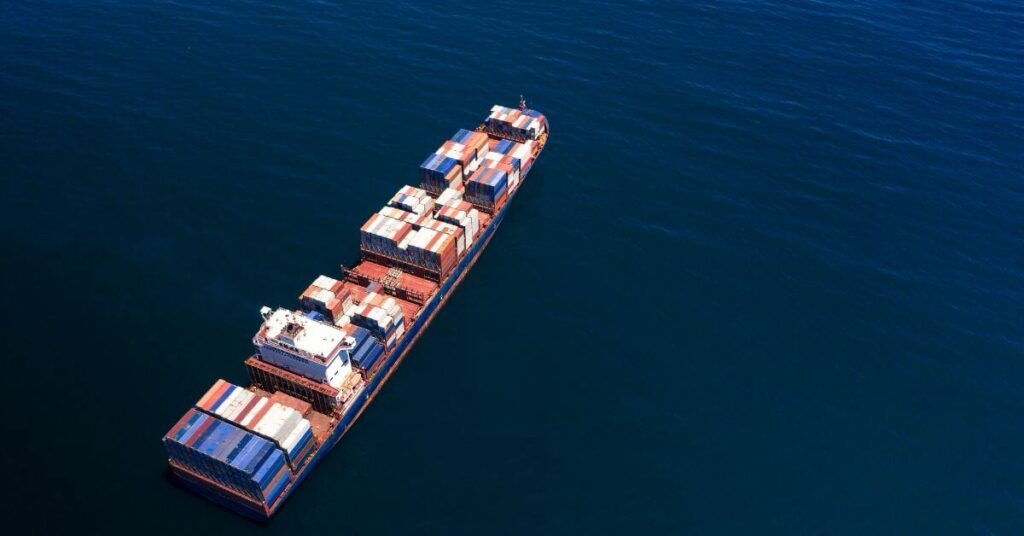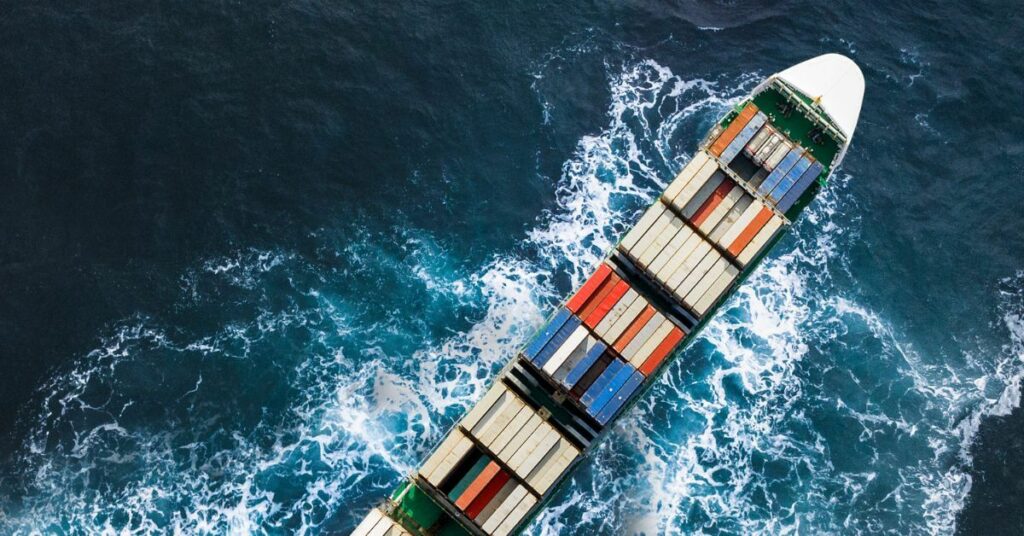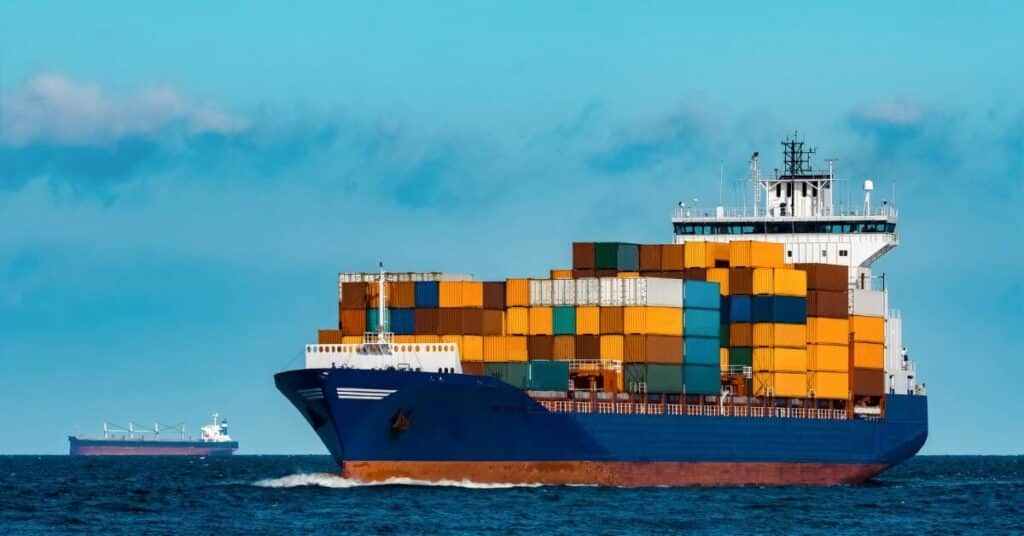What Does The Future Hold For Shipping?
Remi Eriksen, Group President, and CEO DNV GL discussed some of the upcoming developments in the maritime world in his speech at the Danish Maritime Technology Conference. Read his lightly edited version of these remarks:
Digitalization and de-carbonization are watchwords for the coming decade, and I will try to explain how the maritime industry can navigate these developments to its best advantage. I will use three examples to illustrate how shipping can advance – to become safer, more efficient and at the same time reduce its environmental footprint.
The main question for all of us is: What does the future hold for shipping?
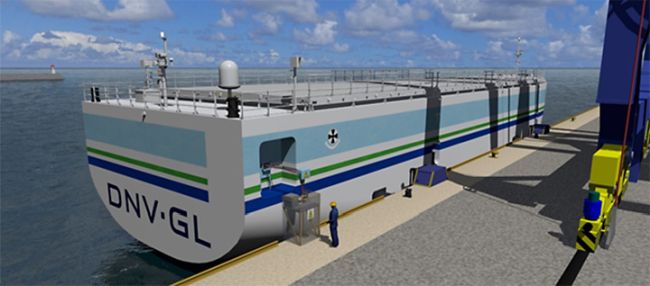
Obviously, the future is notoriously hard to predict and a straight answer is far from easy to give.
What I do know is that shipping will continue to play an important part of the world economy for decades to come. But the industry itself, the vessels, the infrastructure, and the systems that connect them could change substantially. We can of course not ignore the current market situation and the structural effect this might have. But, today is not an arena for fear and pessimism. This is an arena for curiosity, innovation and opportunity.
LNG as a marine fuel
Today shipping plays an integral part in the global economy and moves more than 80 percent of world trade by volume. Not only does shipping move the majority share of world trade, but it also does so while emitting the least amount of greenhouse gasses per transported unit.
In the recent COP21 agreement, shipping was in fact left out. Approximately 2.5 percent of global greenhouse gas emissions can be accounted for shipping, and the industry will not be left alone. It will have to do its bit. A key question is, therefore: How can shipping reduce its environmental footprint, improve cost-effectiveness while at the same time remain the preferred mode of transportation of goods?
One answer is alternative fuels. Depending on fuel type, greenhouse gas emissions, NOX, SOX, and local particle emissions can be significantly reduced – if we want. The technologies are there. Today the leading alternative fuel for ships is LNG. LNG exists in abundance and is becoming increasingly available as infrastructure continues to be built. Right now – ferries and offshore vessels make up the majority of the LNG fuelled ships in operation, but container vessels and oil and chemical tankers are catching up.

Let’s take a closer look at LNG fueled container vessels. Together with industry partners, we have investigated the possibility of using a combined gas and steam turbine system (COGAS) to power an ultra-large container vessel.
The project called PERFECt – Piston Engine Room Free Efficient Containership – has developed an LNG-fuelled concept vessel that is electrically driven. PERFECt has a propulsion concept that has the potential to offer a more efficient, more flexible and greener box ship than current 20,000 TEU diesel-engine-driven container vessels.
This new design combines the exceptional volumetric efficiency of membrane containment technology with flexible electric propulsion to save cargo space and improve fuel efficiency compared to a conventional design. Two 11,000 m³ LNG fuel tanks are located below the deckhouse, giving the vessel enough fuel capacity for an Asia/Europe round trip. With the gas and steam turbines integrated at deck level within the same deck house as the tanks, space normally occupied by the conventional engine room can be used to increase cargo capacity significantly. Separating electric power generation from electric propulsion allows the electric power plant to be moved away from the main propulsion system, giving a great deal of flexibility. In fact, an engine room is not needed anymore. The three electric main motors, which are arranged on one common shaft, can be run fully independently of each other providing increased reliability and safety.
The first phase of the project performed by GTT, CMA Ships and DNV GL showed that the project is technically and economically viable. We are now in the second phase of the project and we have been joined by ABB, the Caterpillar company Solar Turbines, and OMT. We will look at optimizing the COGAS system, using the cooling capacity of the LNG, and further optimization of the hull lines to attain greater efficiency and increased cargo capacity.
3D printing
The next potential game-changer in shipping is additive manufacturing or 3D printing. Not only can additive manufacturing result in new designs for more efficient machinery components, it could also allow spare parts to be produced locally in various ports around the world. This would improve responsiveness to market demands, shorten the time for repairs and contribute to more efficient ship operations.
The technology is already being used for rapid prototyping, but it is now gradually being integrated into existing manufacturing infrastructure, for example in the automotive and aircraft manufacturing industries. It has fewer design restrictions compared to conventional manufacturing processes, it offers possibilities for novel designs, including lightweight products, and has the potential to shorten manufacturing time significantly.
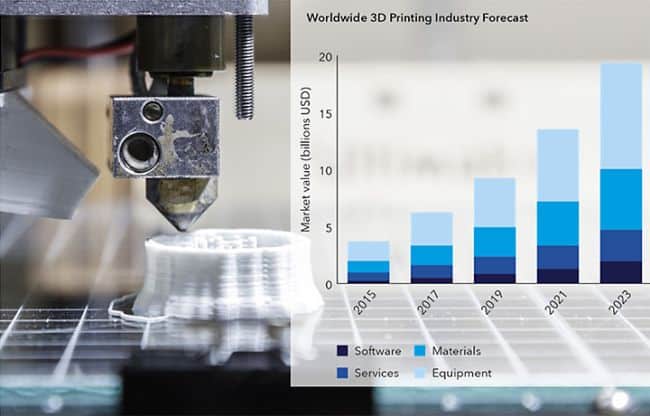
The US Navy has started testing the technology onboard ships, to evaluate the potential of producing spare parts. However, this requires trained personnel on board, and the printer will be subject to the motions of the vessel, potentially affecting product quality.
So, there are some issues that need to be thought through. Qualification and certification may present significant challenges because of the potential for variability in specified properties. The traditional qualification methods of repeated testing of an end product produced from a centralized facility will not be sufficient. The distributed nature of additive manufacturing means that the product characteristics determined for one location may be entirely different from another location – owing to software and hardware differences, or other factors.
An additional or ‘second-order’ downside of additive manufacturing for shipping is that the distributed production of manufactured goods may reduce the overall demand for shipping of goods.
Digitalization and autonomous shipping
The shipping industry will have to continue innovating to keep up with the increasing expectations from end-users, charterers, regulators and society at large. This is not just about the technology itself, but also about how successful we are in scaling it to the point where it delivers real financial, environmental and societal benefits.
On that note – we should all keep an eye on all the possibilities that digitalization of shipping holds. Ships are becoming sophisticated sensor hubs and data generators, and advances in satellite communications and antenna technology are improving ship connectivity. This allows for a massive increase in the volumes of data transferred between ship and shore – at ever-lower cost.
Digitalization of information flows will spur the automation of existing processes and functions and positively impact safety and environmental performance. The fleet of the future will continually communicate with its managers and perhaps even with a “traffic control” system that is monitoring vessel positions, manoeuvres and speeds.
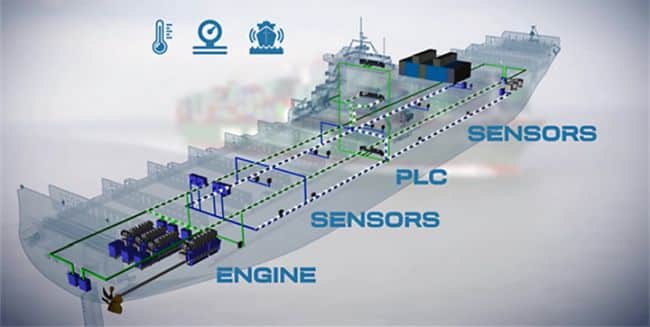
Fleet managers will be able to analyze this data, enabling them to advise the captain and crew on navigation, weather patterns, fuel consumption, and port arrival. This will help to reduce the risks of human error leading to accidents, increase cost efficiency, and help to improve environmental performance. Some of these data will also be shared. Ports will use the data to help them plan and optimize loading and unloading. Classification societies will analyze the data to check on the status of machinery and hull, letting the owners and operators know when a survey is required based on the condition of the systems, helping them to reduce downtime and avoid unnecessary maintenance.
Onshore, new cloud technologies, such as big data platforms and digital twin technologies will have a dramatic effect on how the industry manages information, and how vessels and their components are designed, built, and operated – all of which will see new digital business models emerging.
A potential game changer that may spring out of the progress within information and communication technology is the advent of unmanned vessels. Unmanned vessels can either be remotely operated from shore, on autopilot or be completely autonomous. Many steps will be needed before fully unmanned ships can become a reality. However; some sort of autonomy is also relevant to manned ships, and it would greatly increase safety through smart decision support.
In order to increase this autonomy, situational awareness needs to be improved dramatically. When it comes to autonomous equipment, it’s predicted that equipment like Electronic Chart Display and Information System (ECDIS), GPS, RADARS, CAMERAS and LIDARS (light detection and ranging) will be utilized to create situational awareness around the vessel. These are all systems and sensors which are available on the market today.
We have been researching topics around autonomous and remotely operated vessels for several years now in close cooperation with academia and industry partners. Our goal is to develop classification requirements and assurance principles that will allow the safe introduction of this technology in the maritime industry.
One example is the Advanced Autonomous Waterborne Application Initiative – better known as AAWA. Our focus in this project is to develop class requirements and principles for assurance of safety and performance. A general principle for new technology solutions to be introduced, is that it must be “as safe as, or safer than” existing solutions. At DNV GL we are in the process of forming the framework that will demonstrate this for various degrees of autonomy. Key in this process will be to undertake comprehensive simulations, HIL testing, and physical trials.
Closing
The key drivers for the coming decade are decarbonisation and digitalisation and offer opportunities for the maritime industry to become safer, more efficient while at the same time reducing its environmental footprint. At DNV GL we are excited to be a part of this transformation. We will continue to work with stakeholders across the maritime world to realize the potential of our industry – so that the outlook for shipping tomorrow will be brighter than today.
Technology Outlook 2025
Click here to read further interesting articles on future technologies
Reference: dnvgl.com
Disclaimer :
The information contained in this website is for general information purposes only. While we endeavour to keep the information up to date and correct, we make no representations or warranties of any kind, express or implied, about the completeness, accuracy, reliability, suitability or availability with respect to the website or the information, products, services, or related graphics contained on the website for any purpose. Any reliance you place on such information is therefore strictly at your own risk.
In no event will we be liable for any loss or damage including without limitation, indirect or consequential loss or damage, or any loss or damage whatsoever arising from loss of data or profits arising out of, or in connection with, the use of this website.
Disclaimer :
The information contained in this website is for general information purposes only. While we endeavour to keep the information up to date and correct, we make no representations or warranties of any kind, express or implied, about the completeness, accuracy, reliability, suitability or availability with respect to the website or the information, products, services, or related graphics contained on the website for any purpose. Any reliance you place on such information is therefore strictly at your own risk.
Do you have info to share with us ? Suggest a correction
About Author
Marine Insight News Network is a premier source for up-to-date, comprehensive, and insightful coverage of the maritime industry. Dedicated to offering the latest news, trends, and analyses in shipping, marine technology, regulations, and global maritime affairs, Marine Insight News Network prides itself on delivering accurate, engaging, and relevant information.

About Author
Marine Insight News Network is a premier source for up-to-date, comprehensive, and insightful coverage of the maritime industry. Dedicated to offering the latest news, trends, and analyses in shipping, marine technology, regulations, and global maritime affairs, Marine Insight News Network prides itself on delivering accurate, engaging, and relevant information.
Latest Shipping News Articles You Would Like:
Subscribe To Our Newsletters
By subscribing, you agree to our Privacy Policy and may receive occasional deal communications; you can unsubscribe anytime.




